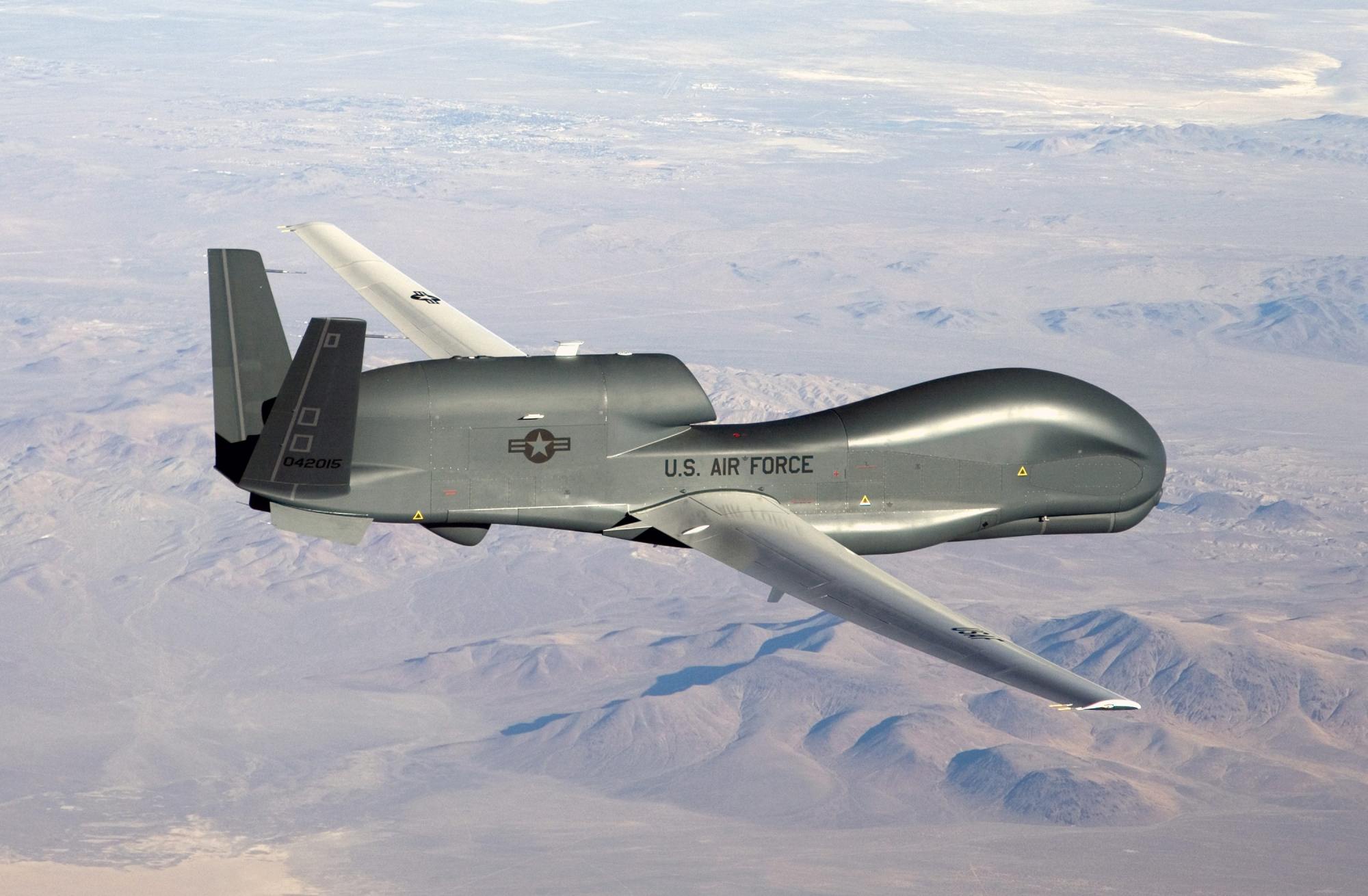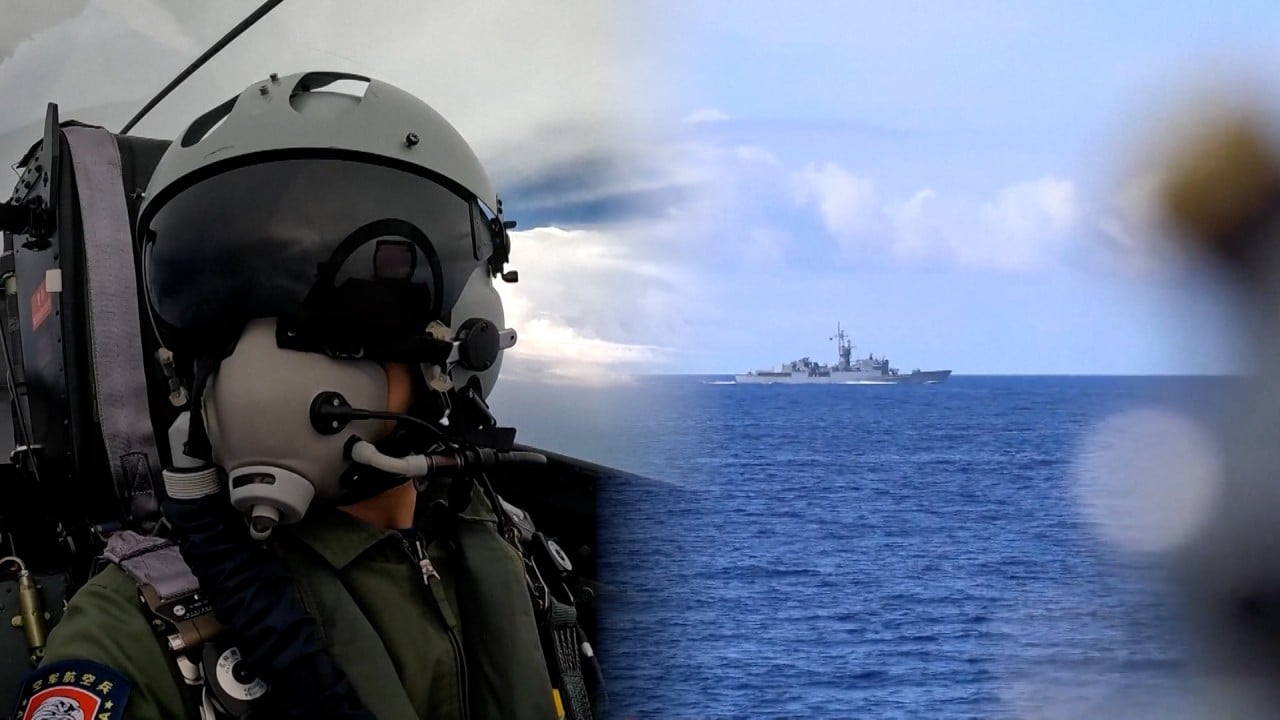But thanks to a recent technological breakthrough, the People’s Liberation Army can now get drone jet engines with superior performance at less than a fifth of the international price, engineering thermal physicist Zhu Junqiang said in a presentation about the project released by the Chinese Academy of Sciences on October 19.
As the drones will be deployed in large numbers, the impact of the price gap between military budgets could be significant.
But on unmanned military platforms, Chinese researchers have had more liberty to experiment.
“We built the world’s first compact turbofan engine with a single shaft,” Zhu said.
Almost every turbofan engine in use today uses multiple shafts for power transmission. That is because the smaller fans which compress air in the front of the engine need to rotate at a faster speed than the bigger fans at the rear which generate thrust.
The Global Hawk’s turbofan, for instance, uses two shafts connected by a sophisticated gearbox. If the gears bite and lock the shafts into one piece, the drone can drop like a stone.
But the airflow in China’s single-shaft turbofan is different from other engines. Instead of going straight from front to end, it moves through saxophone-shaped ducts. This new design, according to Zhu, allows the air-compressing and thrust-generating fans to spin at the same pace. A single shaft can therefore connect all the fans.

The price of an engine is not the only thing militaries care about, though. The overall performance and ease of servicing are also taken into account – and they usually do not like machines that use a design radically different from previous models.
But the PLA was quick to embrace the new engine, mainly because it had a lot of things going for it: it consumed nearly a third less fuel than the two-shaft engines and its maintenance costs were significantly cheaper due to having 70 per cent fewer mechanical components.
The total cost to buy and run the drone engine was therefore reduced by about 80 per cent.
“This is very remarkable,” Zhu said.
Military customers are often willing to pay a lot more for their drones than civilian users. A high-speed military drone powered by a jet engine is usually categorised as a high-value asset. But their number is relatively small. Even the US, which has a bigger military budget than all other countries combined, can only afford to buy 42 Global Hawks, which cost US$130 million each.
China saw an opportunity with these high costs, according to Zhu. Having the ability now to deploy more drones with better performance at a much lower cost means China could begin an arms race that will put a significant financial burden on to the US.
“The war [of drones] will be a war of money,” Zhu said.

It is an arms race that the US, nonetheless, has decided to engage in.
The US drone initiative has stressed the importance of lowering costs – just like it did in previous drone programmes – but it did not compare the prices between Chinese and American drones.
These issues are in part caused by the technical limit of the engines. Accelerating a drone to supersonic speed with a small turbofan engine has been a headache to aviation engineers for decades. It requires adding an afterburner to the engine, and it is extremely difficult to squeeze the extra components into the limited space.
Small jet engines can also fail at altitudes above 20,000 metres (65,000 feet). Thin air makes it hard to maintain stable combustion, especially in an engine with steep cost constraints.
Zhu said they had solved these problems with a number of technological innovations, including an unprecedented overhaul of the afterburner and combustion chamber design.
China exhibition shows latest military advances in drone technology
China exhibition shows latest military advances in drone technology
But a concern remains that the Chinese drones have never been used in a large-scale conflict.
Some countries such as Saudi Arabia, Myanmar, Iraq and Ethiopia have bought military drones from China. These have mainly been slow-speed variants powered by piston engines, and are mostly used for surveillance or guerrilla -style attacks.
However the US drones have never been used to fight an opponent as powerful as China either. This year, the Chinese government also massively increased its funding to develop new drone engine technology, according to Zhu.
His team is building a facility about the size of 24 football fields to support the development of next-generation drones. The facility will simulate the extreme environment of flight at Mach 6 on the ground.
And for the first time, researchers will use a giant X-ray machine to study hidden structural changes of the engine and drone throughout the ground test, which will help them find new clues to improve performance and reduce cost.



